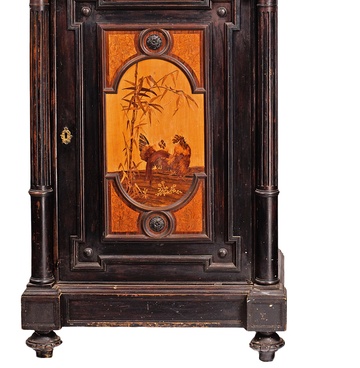The exhibition presents an iron bed with wire mesh base. The headboard has three horizontal beams; the top one is nickel-plated. The lower and middle beams are connected by seven vertical bars. The bed and the base are covered in blue oil paint.
The bed stands in the room that Khristina Mikhailovna Sergeyeva-Tsenskaya occupied even after the museum’s opening. The modest furnishings reflect the self-discipline and restraint of the writer’s wife, who led a busy life taking care of all dealings with the outside world (in the face of publishers and editors) and everyday matters. In the post-war years, Khristina Sergeyeva-Tsenskaya hired housekeepers, including Yevdoniya Perez, who worked the longest.
In the early 1960s, the writer’s house had a lot of visitors, up to 200–400 people a day. Khristina Sergeyeva-Tsenskaya used to greet visitors, tell them about the life and legacy of Sergey Sergeyev-Tsensky and show them around the rooms of the house. The undying interest in the writer’s life prompted the widow to petition the government to establish a museum in the writer’s study.
Between 1959 and 1961, preparations for the opening of the museum were made, and by the summer of 1961, it became clear that the event would indeed take place. The Ministry of Culture sent experienced museum staff from the Poltava region — Ivan Arsentyevich Fesiura and his wife Galina Pavlovna Kundirenko — to organize the opening of the museum, systematize the materials and create the first exhibition. Ivan Fesiura became the first director of the Sergeyev-Tsensky Museum, and Galina Kundirenko became the museum’s first senior researcher. Valentin Kozlov, who was the husband of Khristina Sergeyeva-Tsenskaya’s niece and Sergey Sergeyev-Tsensky’s secretary, became the first researcher. On May 6, 1962, the Sergeyev-Tsensky Literary Memorial Museum opened its doors. One of the terms of the opening was appointing Khristina Sergeyeva-Tsenskaya as the chief curator.
When the writer’s wife died in 1965, the two rooms that she used to occupy were given to the museum, becoming an extension of the memorial exhibition.


